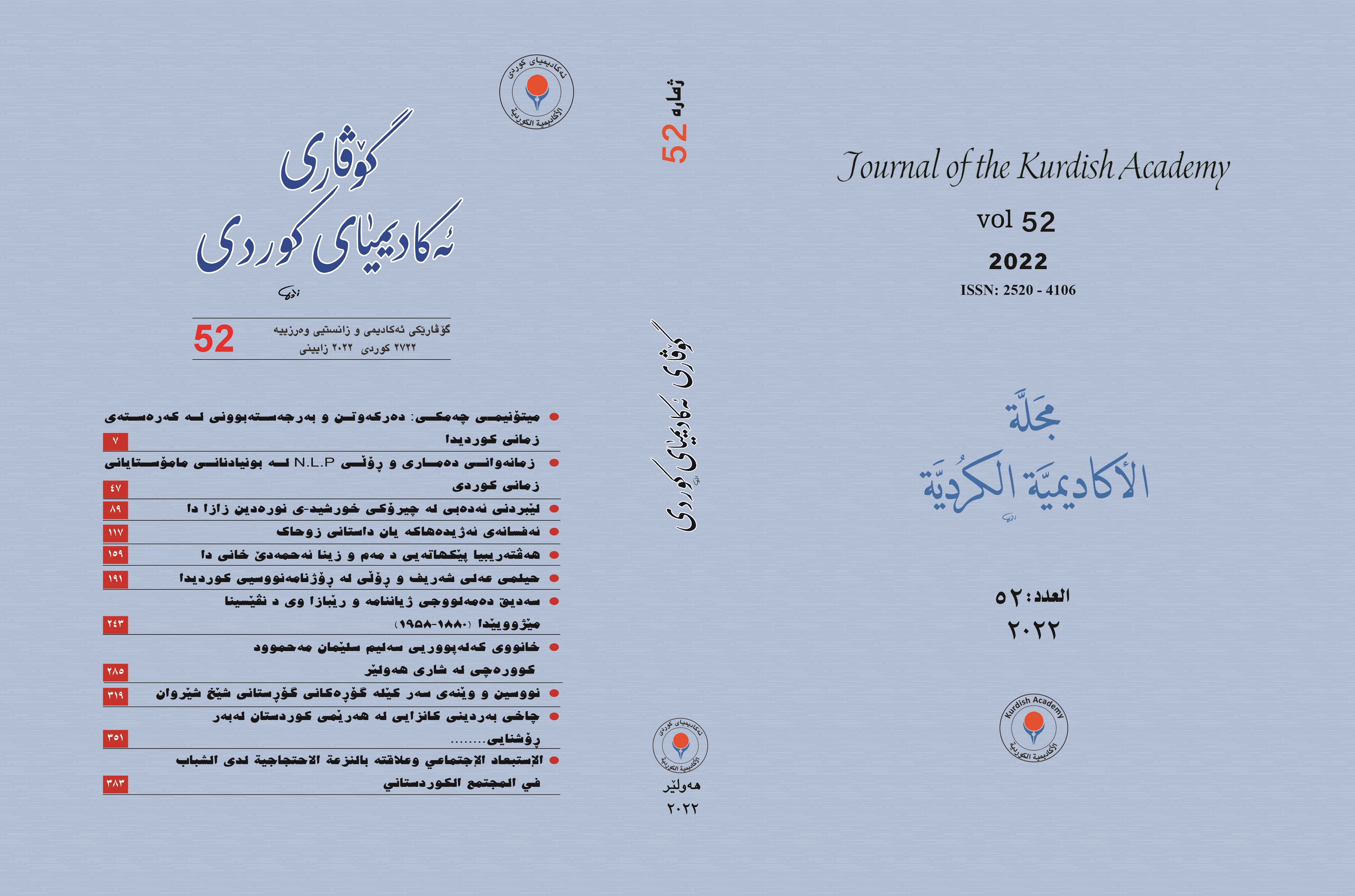چاخی بهردینی كانزایی له ههرێمی كوردستان لهبهر ڕۆشنایی پشكنینه شوێنهوارییهكانی گردی سورێژه
DOI:
https://doi.org/10.56422/ka..52.94Keywords:
Tell Surezha, Chalcolithic Period, Urban Revolution, Halaf, UbaidAbstract
Prehistoric periods in Kurdistan region and in particular Chalcolithic Period, are rich for archeological sites. In this vein, some new archaeological sites have been discovered based on the conclusions gained from recent archeological excavations which historically belong to the aforementioned age.
One of the most important archeological sites is Surezha Hill (Grdi Surezha). A very vivid image of human life could be portrayed in terms settlement and construction. Economic life could be realized after investigating the remains of plants and animal which can be considered as two important pillars of human food.
One of the other important tools for archaeologist to look for is by inspecting tools and necessities of human beings of that age to display how they lived on daily basis. In particular pottery remains has helped archaeologists to understand the settlements and qualities of civilization in those sites. Therefore, human inventions had paved the way for humans to start civilized life and thus led to the emergence of urban life.





